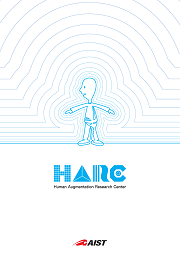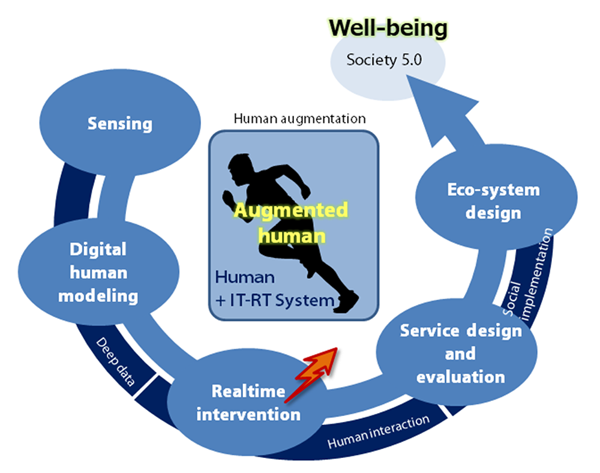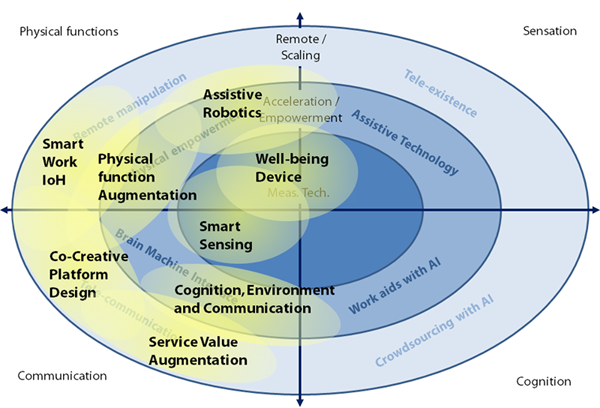Human Augmentation Research Center
- Smart Sensing Research Team(SSRT)
- Well-being Device Research Team (WDRT)
- Assistive Robotics Research Team(ARRT)
- Exercise motivation and Physical function Augmentation Research Team(ExPART)
- Cognition, Environment and Communication Research Team(CECRT)
- Smart Work IoH Research Team(SWIoH)
- Service Value Augmentation Research Team(SVART)
- Co-Creative Platform Research Team(CCPRT)
A research field of human augmentation is categorized in the figure. Human functions to be augmented are categorized into four (physical, sensation, cognition and communication), and direction of augmentation is also categorized into two (remote/scaling and acceleration/empowerment). Research topics of eight research teams are mapped as dark yellow circles. Human Augmentation Research Center focuses on physical function and communication. Augmentation technologies for human sensation are conducted by collaboration with Human Informatics and Interaction Research Institute, and augmentation technologies using robotics are collaborated with Industrial Cyber-Physical Systems Research Center of AIST. Augmentation technologies for human cognition and knowledge are conducted by collaboration with Artificial Intelligence Research Center and Human-Centered Mobility Research Center. Moreover, novel resign methodology towards Society5.0 is developed with Digital Architecture Reseach Center.


